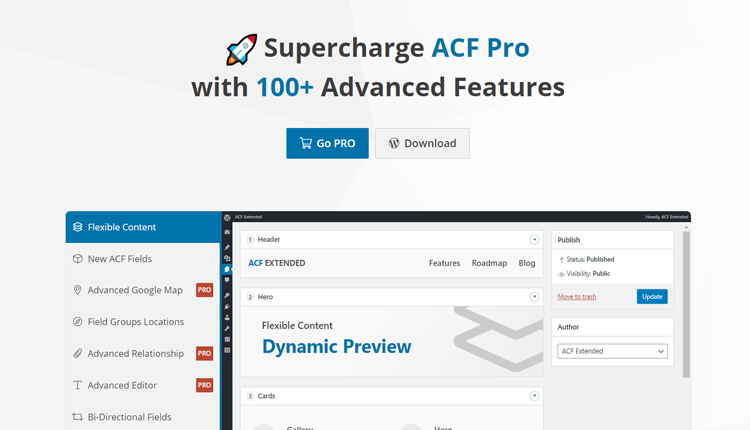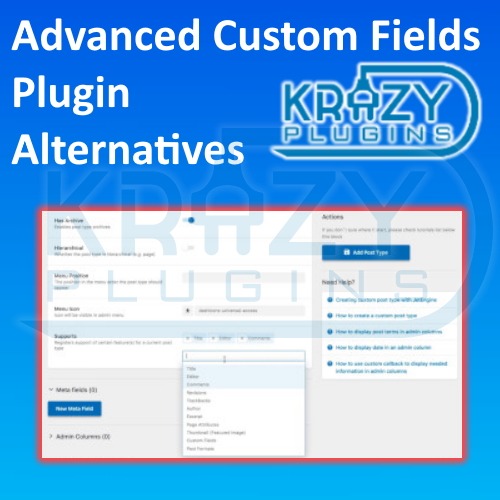[Advanced Custom Fields: Auto-generated Values For Beginners]

Executive Summary

Advanced Custom Fields (ACF) is a powerful WordPress plugin that lets you create custom fields for your content. This allows you to add extra data to your posts, pages, users, and other content types. With ACF, you can store information that goes beyond the standard WordPress editor, making your website more dynamic and functional. This article delves into the fascinating world of auto-generated values in ACF, exploring how to harness its power to streamline your website development process. We’ll unpack the concept, outline its benefits, and provide actionable steps for implementation.

Introduction
Auto-generated values in ACF empower you to automatically populate custom fields with data based on various triggers, saving you time and effort. This eliminates the need for manual data entry and ensures consistency across your website. Whether you’re managing complex product catalogs, creating dynamic post layouts, or automating workflow processes, this feature is a game-changer.
What are ACF auto-generated values?
- What exactly are auto-generated values? They are values that are automatically filled in based on predefined rules. This means you don’t have to manually enter them. For example, you can automatically populate a custom field with the current date or the post author’s name.
- How does this work? ACF uses a powerful system called “Field Groups” to organize custom fields. Each field group can contain various field types, including auto-generated value fields. These fields have specific settings that define how the value will be generated.
- Why should I use them? Auto-generated values eliminate repetitive manual data entry, ensuring consistency and accuracy across your content. They can save you a significant amount of time, especially if you have many posts or pages with similar data.
- What are some examples of auto-generated values? Some common examples include:
- The current date and time: This is useful for tracking when content was created or last updated.
- The post author’s name: This automatically assigns the author’s name to a post or page.
- The post’s URL: This can be helpful for generating a unique ID for each post.
How to Create Auto-Generated Values in ACF
- Understanding Field Groups: ACF Field Groups serve as containers to group custom fields. You’ll be working within these field groups to add auto-generated value fields.
- Defining the Auto-Generated Value Field: Choose the type of field you need (e.g., text field, number field, date field). Set the field label and name.
- Selecting the Auto-Generation Type: This is where you choose what data to automatically populate the field with.
- Setting the Specific Rules: Depending on the chosen auto-generation type, you might need to specify additional rules. For example, you might need to select a specific date format for a date field.
- Applying the Field Group: Attach the field group with your auto-generated values to the desired content types (e.g., posts, pages, users) to activate the functionality.
Types of ACF Auto-Generated Values
Date and Time
- Current Date: This generates the current date in your chosen format. This is useful for automatically timestamping content.
- Current Time: This automatically populates the field with the current time in your preferred format. This can be useful for tracking the time of an event or activity.
- Relative Date: This allows you to set a date relative to the current date. For example, you can create a field that automatically populates with the date one week from now. This is helpful for scheduling future events or activities.
User-Related Data
- User ID: This automatically populates the field with the user’s ID number. Useful for associating content with specific users.
- User Display Name: This adds the user’s display name to the field. This can be helpful for attributing content or displaying user information.
- User Email: This automatically pulls the user’s email address into the field. Useful for creating contact forms or sending notifications.
Post-Related Data
- Post ID: This generates the unique ID of the current post. This can be helpful for creating unique identifiers for posts.
- Post Title: This automatically populates the field with the current post’s title. Useful for referencing the post title within your custom fields.
- Post Author Name: This displays the name of the post’s author. Helpful for attribution and user tracking.
Advanced Auto-Generated Value Techniques
Conditional Logic
- What is Conditional Logic? This powerful feature within ACF allows you to control the visibility of custom fields based on the value of other fields. This enables you to create dynamic and responsive forms and interfaces.
- How does it work? You can create rules based on the values of other custom fields. If the condition is met, the designated field will be displayed. Otherwise, it will be hidden.
- Why use it? Conditional logic can simplify your forms, enhance user experience, and automate workflows.
- Example: Imagine a form for booking appointments. You could use conditional logic to show a field for “appointment time” only after the user selects a specific service.
Dynamic Data from External Sources
- What is dynamic data? This refers to data that is pulled from external sources, such as databases or APIs.
- Why is it important? Dynamic data allows you to enrich your custom fields with real-time information, creating interactive and dynamic experiences.
- How to implement it: You can use PHP code or dedicated ACF add-ons to fetch data from external sources and populate custom fields.
- Example: You could use dynamic data to pull product prices from an external API and automatically update your product catalog.
Conclusion
Auto-generated values in ACF provide a powerful and efficient way to streamline your website development. By leveraging this feature, you can eliminate manual data entry, improve accuracy, and create dynamic and interactive content. Whether you’re creating custom post types, building complex forms, or managing user data, ACF’s auto-generated values offer a versatile solution for a wide range of website development tasks. As you explore the world of auto-generated values, remember to consider the specific needs of your website and the benefits this feature can bring to your workflow.
Keywords
- Advanced Custom Fields
- Auto-generated Values
- WordPress Plugin
- Custom Fields
- Dynamic Content
This article was a little confusing for me. I'm not sure I understand how to use the ACF repeater field to generate values. Could someone explain it more clearly?
This is a very helpful article! I've been looking for a way to auto-generate values in Advanced Custom Fields for a while now. The examples were easy to follow and I was able to get it working quickly. Thanks for sharing!
I think this article is misleading. It says that you can auto-generate values using ACF, but that's not really true. You can only auto-generate them using custom code, which is not what this article is about.
This article is so funny! I love how it's written like a child's story. It's so simple and easy to understand. I think I'm going to use this technique to generate my own personalized fortune cookies.
I didn't know you could use ACF to auto-generate values. This is very interesting! I'm going to try it out on my next project.
So, you're telling me that we can now have computers write our code for us? That's amazing! I'm going to go back to sleeping now.
This article is so basic. I've been using ACF for years and I already know all of this. I guess it's good for beginners, but I'm not sure why anyone would need to read it.
This article is a great starting point for learning about auto-generating values in ACF. It's definitely not the only way to do it, but it's a good place to start. I'm looking forward to seeing more advanced examples in the future.